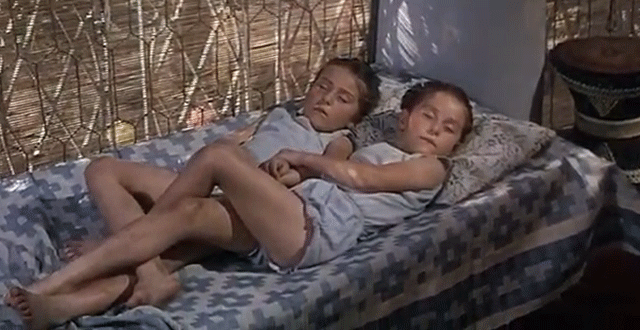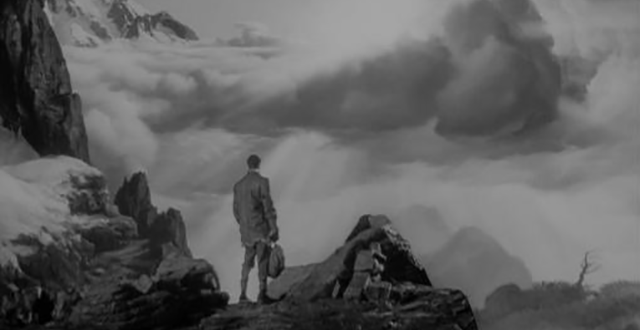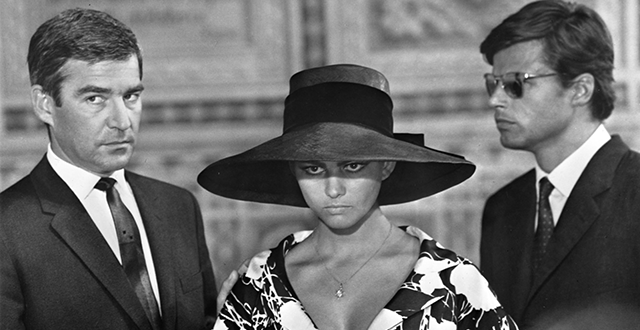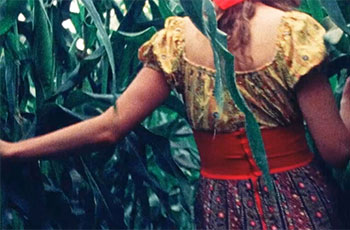News
COMMEMORATING 30 YEARS OF TFF
It’s impossible to overestimate the effect of Jean Renoir’s films, presence, and approach to cinema for generations of filmmakers, film critics and film lovers. Like Robert Bresson, Renoir was more than just a director. His films, his writings, his public statements amounted to an inspiring spiritual force, a bulwark against vulgarity, compulsive intellectualizing, pretentiousness and self-destruction. To a certain extent, Renoir anticipated Italian neorealism with his 1935 film Toni, and the French New Wave would have been unthinkable without his example and his encouragement. If his presence is not invoked as constantly as it once was, that’s simply because things change over time and new generations find new touchstones and new orientations. Renoir’s greatness now has a different hue, and his voice speaks to us in another register from a more distant past.
My ambition, he once wrote, is to float through life like a cork on a stream. There are many ways to interpret such a statement, some more flattering than others, but it does get right to the heart of the most extraordinary aspect of Renoir’s art. In The River, his 1950 adaptation of Rumer Godden’s autobiographical novel about a girl named Harriet growing up with her family in India—and his first film in color (and what color!…every frame of it beautifully restored by Mike Pogorzelski and his team at the Academy Film Archive, with support from The Film Foundation and Janus Films)—there is a little passage comprised of nothing more (or less) than images of members of the Harriet’s household taking their afternoon naps. Renoir took a particularly long time with Jane and Jennifer Harris, the girls who played Harriet’s twin sisters, getting them into the right physical positions in the frame (the image has a direct link with the paintings of Renoir’s father Auguste) but also into the right state of being, so that they become more than just two little girls pretending to be asleep. In other words, he took the time he needed to create the conditions for the filmed moment to escape any frozen notions or preconceptions, his own above all. There’s another moment later in the film that never ceases to amaze me. Harriet’s fearless little brother Bogie has been bitten by a cobra and died. There is a shot of Harriet’s father and the family friend played by Arthur Shields carrying Bogie’s coffin out onto a dock to the river. As Shields turns, the coffin knocks against the bamboo post. Shields pivots in distress, composes himself and goes on. It’s a stunning moment, a stark and eloquent reminder that life never stops.
One more word about Renoir. He once wrote that he believed advertising to be the cancer of western civilization. At this very moment, when so many are so consumed with “branding” and “messaging” and “shaping” and “categorizing” every conceivable aspect of experience, his words resound more deeply with every passing second.
- Kent Jones
Follow us on Facebook, Instagram, and Twitter!
THE RIVER (1951, d. Jean Renoir)
Restored by Academy Film Archive, in association with the BFI and Janus Films, with restoration funding provided by the Hollywood Foreign Press Association and The Film Foundation.
COMMEMORATING 30 YEARS OF TFF
W. Somerset Maugham was, for the first half of the 20th century, a central figure in our culture, a writer whose novels, stories, and travelogues were read by millions. Movie history would have been very different without Maugham, whose writing is extremely “filmable.” The short story and play The Letter, the short story “Rain” and the novel Of Human Bondage were all adapted multiple times. The author’s years as a British intelligence agent inspired his 1928 collection of short stories about a spy named Ashenden, which in turn inspired Ian Fleming when he conceived the character James Bond (the stories were adapted by Hitchcock for his 1936 film Secret Agent). Other works have been made into films as diverse as The Circle by Frank Borzage, Christmas Holiday by Robert Siodmak, and Istvan Szabo’s Being Julia with Annette Bening, not to mention the three lovely English omnibus films comprised of Maugham stories, introduced onscreen by the author himself. The Razor’s Edge, one of my favorite Maugham novels (I’m not alone), has been adapted twice. The Film Foundation worked with Fox to create a stunning restoration of the 1946 version, a Darryl Zanuck super production with Tyrone Power, Gene Tierney, Clifton Webb and, in the role of Maugham himself, Herbert Marshall (Marshall had also played the Maugham figure in Albert Lewin’s The Moon and Sixpence). The Razor’s Edge anticipated a powerful movement in the culture two decades later: the eastern-facing search for spiritual enlightenment undertaken by men and women whose faith in the western world had been shaken or shattered. Maugham based many of his characters on real individuals, and Tyrone Power’s Larry—a WWI vet who leaves his comfortable life in Chicago and embarks on a journey that leads him to the shelter of a holy man on a Himalayan mountaintop—appears to be a composite of different men whose paths Maugham crossed: an American engineer and WWII Navy vet named Guy Hague; Lewis Thompson, the English poet who left his homeland for India in the 30s; and Krishna Prem, born as Ronald Nixon, who had also been a pilot. In the context of 40s Hollywood, Larry is an anomaly, an uncompromising spiritual seeker, and Power (who had himself just come back from a stint in the Marines) is as affecting in the role as he would be a year later in Nightmare Alley, also directed by Edmund Goulding. Maugham worked on a draft of the script at the request of the original director, George Cukor, but none of it was used, and his experience in Hollywood was not a happy one. I don’t know what the author thought of the finished product, but the film is quite true to the spirit of Maugham’s novel and his writing in general.
- Kent Jones
Follow us on Facebook, Instagram, and Twitter!
THE RAZOR'S EDGE (1946, d. Edmund Goulding)
Restored by Twentieth Century Fox in collaboration with The Film Foundation.
Out of the Vaults: “A Fistful of Dollars”, 1964
Meher Tatna
Henry Fonda. Charles Bronson. Jason Robards. Rory Calhoun. Richard Harrison. Luciano Stella. Philippe Leroy. James Coburn. Tony Russel. Henry Silva. Ty Hardin. These are all the actors who passed on the lead role in Sergio Leone’s A Fistful of Dollars. Finally, a young actor on the TV show Rawhide was offered the part because he could ride a horse. Clint Eastwood took the role of the Man with No Name for $15,000. It made him a star.
In the story, a gunslinger rides into the town of San Miguel on the Mexican-US border. Two rival gangster families, one Mexican, one American, are locked in a power struggle, terrorizing the town. When a contingent of soldiers bearing gold to buy arms at the US border is waylaid and massacred by the Mexican clan, the Man gets involved, playing one side against the other for his fistful of dollars. That this man helps a beautiful victim escape her jailers shows a small chink in his armor – “I knew someone like you once,” he tells her. But otherwise, this violent and amoral protagonist is only on his own side. Starring alongside Eastwood is Johnny Wels, German actress Marianne Koch (with one line of dialogue), W. Lukschy, Jose Calvo, S. Rupp, Antonio Prieto, Carol Brown, Benny Reeves, and Joe Edger.
Fistful was shot in Spain, mostly outside Madrid and in Almeria, in 8 weeks for $200,000. Leone had a distinctive visual directorial style of panoramic sweeps and carefully framed close-ups. Eastwood assembled his own costume – his black jeans came from a shop on Hollywood Boulevard, the hat from a shop in Santa Monica, and the trademark cigars from a shop in Beverly Hills. The poncho was bought in Spain. Leone did not speak English and Eastwood did not speak Italian, so they mostly communicated through Eastwood’s stuntman Benito Stefanelli. The shoestring budget did not allow for fancy trailers. Eastwood said in an interview, “We had no electricity. We didn’t have a trailer with a toilet. We just went out behind the rocks.” All footage was shot silently, with dialogue and sound effects added later in post-production. Eastwood did not dub his own voice until the movie opened in the US in 1967. He was dubbed in Italian by Enrico Maria Salerno.
The “spaghetti western” was released in Italy in 1964. It was three years later that it screened in the US because of a lawsuit filed against the filmmakers by Akira Kurosawa for breach of copyright. He claimed that Fistful plagiarized his 1961 movie Yojimbo. And the plot did indeed bear striking resemblances. Kurosawa prevailed in the lawsuit and was awarded 15% of worldwide receipts plus exclusive distribution rights in some Far Eastern countries. He ended up making more money from this movie than from Yojimbo.
When it did open in the US, the director and a few cast and crew members gave themselves Anglicized names to broaden the appeal for this little-known genre. Leone called himself Bob Robertson. Gian Maria Volonte was Johnny Wels. Benito Stefanelli was Benny Reeves. Bruno Carotenuto was Carol Brown. Ennio Morricone, the composer, chose the name, Dan Savio. The title card in the movie is just Fistful of Dollars.
According to an interview Eastwood gave The Deseret News in 1990, he had no idea that a movie he read about in Variety called Per un Pugno di Dollari was a huge success in Europe. “Magnificent Stranger” was the title of his movie in production. He only realized it was his movie when he saw his name on it.
The film opened to mostly negative reviews in Italy, but admissions all over Europe made it a hit. When it opened in America, the critics were unkind as well. Philip French of the Observer had this to say: "The calculated sadism of the film would be offensive were it not for the neutralizing laughter aroused by the ludicrousness of the whole exercise. If one didn't know the actual provenance of the film, one would guess that it was a private movie made by a group of rich European Western fans at a dude ranch... A Fistful of Dollars looks awful, has a flat dead soundtrack, and is totally devoid of human feeling.” But again, audiences voted with their wallets and the film earned $14.5 million, including the take from its re-release in 1969.
Two sequels of sorts, For a Few Dollars More and The Good, the Bad and the Ugly, were both released in 1967, again starring Eastwood and collectively known, with Fistful, as the ‘Dollars Trilogy.’ Fistful is now recognized as the film that revived the Western genre. In 1975, the film was shown on ABC TV with a 4 ½ minute prologue added to justify its violence. Written and directed by Monte Hellman, it featured Harry Dean Stanton, as a warden offering a prisoner a pardon if he cleaned up the gangs in San Miguel. Eastwood’s face taken from archival footage represented the prisoner. This prologue preceded a few television screenings of the film and was subsequently removed. Fans can see it on the special edition DVD.
Funding for the 2014 restoration of the film was provided by the Hollywood Foreign Press Association and Martin Scorsese’s The Film Foundation. It was restored by Cineteca di Bologna and Unidis Jolly Film at L’Immagine Ritrovata laboratory, in association with MGM. The restoration was from the original Techniscope 2-perf camera negative deposited at the Cineteca di Bologna by Unidis Jolly Film. Cinematographer Ennio Guarnieri supervised the color correction using a 1965 Technicolor print as a reference. The music was remastered using original 35mm and 16mm magnetic soundtracks deposited at Deluxe in Los Angeles by MGM. The final mix included the remastered music, the 35mm, and 16mm music and effects magnetic soundtracks, and two English-language optical track negatives. Opening and closing titles were restored from a combined first-generation interpositive. DCPs (digital files) and a 35mm print of the restoration were created for screenings. While the title card ‘Bob Robertson’ had been replaced by Sergio Leone, the other pseudonyms were retained.
Fistful had its world restoration premiere at Cannes in 2014 hosted by Quentin Tarantino; its U.S. premiere at the Museum of Modern Art’s “To Save and Project” Festival of Film Preservation, and a special screening as part of the HFPA’s first Restoration Summit in 2019, at the downtown movie palace Theatre at the Ace Hotel in Los Angeles.
COMMEMORATING 30 YEARS OF TFF
Luchino Visconti was and is best known for his epics. The Film Foundation has facilitated four Visconti restorations. Senso, Rocco and His Brothers and The Leopard, restored by the Cineteca di Bologna, unfold on grand historical canvases—Senso and The Leopard at the time of the Risorgimento and Rocco during Italy’s mid-century economic boom. Vaghe stella dell’Orsa, known here as Sandra and restored by Grover Crisp and his team at Sony/Columbia, is unlike any other Visconti film, or any other film for that matter. The action is largely confined to intrigues and conflagrations between six principle characters in a decaying villa in the ancient Tuscan town of Volterra, whose history dates back to the pre-Roman Etruscan civilization. The narrative is inspired by the story of Electra and her brother Orestes, who plotted and carried out the murder of their mother Clytemnestra to avenge her murder of their father. In Vaghe stella dell’Orsa, the Electra and Orestes figures played by Claudia Cardinale and Jean Sorel are returning to their home for the unveiling of a statue dedicated to their father, who was killed in Auschwitz. They both suspect their gentile mother (Marie Bell), now confined to a mental clinic, of having betrayed their father to the Nazis, and her second husband (Renzo Ricci) of aiding and abetting her. Their mother and stepfather in turn accuse Sandra and Gianni of an incestuous relationship— in her mad ravings their mother attributes it to their “Jewish blood.” For Sandra and her deeply disturbed brother, their secret codes and meetings and ingrown physical intimacy are the outward manifestation of a blood pact that protects them from a hostile universe. Sandra’s British husband (Michael Craig) can only observe the endless internecine war of attrition with amazement and growing sadness. If I’m taking pains to lie out the dramatic and thematic particulars, it’s because they’re so densely layered and yet achingly present and felt. For most of the great European directors of the era and for Visconti in particular, politics and aesthetics and psychology and history all flowed together in the same river. Visconti the dramatist knew how to isolate each of these forces while Visconti the director knew how to incarnate and intensify and them within the flow. You can see links between Vaghe stella dell’Orsa and Through a Glass Darkly, but Bergman is zeroed in on questions of madness and the supernatural. You can see links with Muriel and La Guerre est finie, but in Resnais’ films every emotion is tightly held beneath the surface. “It’s along the same lines as those thrillers in which everything appears very clear at the beginning and very obscure by the end,” said Visconti of his film, “as always happens when people attempt the difficult task of understanding their own reactions, feeling absolutely sure they have nothing to learn but ending up face to face with agonizing existential problems.” This kind of lucid understanding of complex issues is largely missing from the cinema now, and that’s a real pity. On cursory examination from the depressingly common contemporary standpoint mandating that everything be boiled down to one adjective or category, Vaghe stella dell’Orsa would appear to be hopelessly “dark,” no matter how “sexy.” As if anything less than an easily comprehensible affirmation were a threat to our security. All I can say is that I find this film a deeply unsettling experience—thrillingly so. That’s why, a few years back, I found myself going back to see it and re-see it four nights in a row.
- Kent Jones
Follow us on Facebook, Instagram, and Twitter!
SENSO (1954, d. Luchino Visconti)
Restored by StudioCanal, Centro Sperimentale di Cinematografia-Cineteca Nazionale, and Cineteca di Bologna at L’Immagine Ritrovata. Restoration funding provided by Gucci, The Film Foundation, and Comitato Italia 150.
ROCCO AND HIS BROTHERS (1960, d. Luchino Visconti)
Restored by Cineteca di Bologna at L’Immagine Ritrovata laboratory in association with Titanus, TF1 Droits Audiovisuels and The Film Foundation. Restoration funding provided by Gucci and The Film Foundation.
THE LEOPARD (1963, d. Luchino Visconti)
Restored in association with Cineteca di Bologna at L’Immagine Ritrovata, Pathé, Fondation Jérôme Seydoux-Pathé, Twentieth Century Fox, and Centro Sperimentale di Cinematografia-Cineteca Nazionale. Restoration funding provided by Gucci and The Film Foundation.
SANDRA (1965, d. Luchino Visconti)
Restoration by Sony Pictures Entertainment in collaboration with Cineteca di Bologna at L'Immagine Ritrovata, Archivio Storico delle Arti Contemporanee di Venezia and The Film Foundation.




